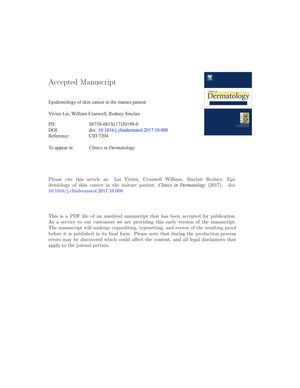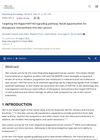Epidemiology of Skin Cancer in the Mature Patient
October 2017
in “
Clinics in Dermatology
”

TLDR Older adults have a high rate of skin cancers like basal cell carcinoma and melanoma, mainly due to UV exposure and age.
The document from 2018 examines the epidemiology of skin cancer in older adults, emphasizing the high incidence and prevalence of epidermal cancers such as keratinocyte cancer, melanoma, and Merkel cell carcinoma (MCC) in regions like Australia, North America, and Europe. It notes that keratinocyte cancer is the most common, with basal cell carcinoma (BCC) being the most prevalent among Caucasians, and actinic keratosis as a common pre-malignant condition that can lead to squamous cell carcinoma (SCC). The incidence of BCC in Australia was reported as 1541 per 100,000 persons in 2010, while SCC incidence was 1035 and 472 per 100,000 person years for males and females, respectively. Melanoma incidence has doubled in the United States from 1982 to 2011, and the mortality rate in Australia is decreasing, currently at 9%. MCC, a rare and aggressive cancer, had an incidence of 0.6 per 100,000 persons in the USA in 2006. The document also discusses the increased risk of developing other primary cancers after a diagnosis of keratinocyte carcinoma or melanoma, with a significant risk ratio of 1.36 for all subsequent malignancies found in a 2014 study of 502,490 patients. The paper concludes that UV exposure and advanced age are primary risk factors for these skin cancers and highlights the need for further research to understand the mechanisms behind these associations and the potential need for increased surveillance for secondary cancers after a melanoma diagnosis.




